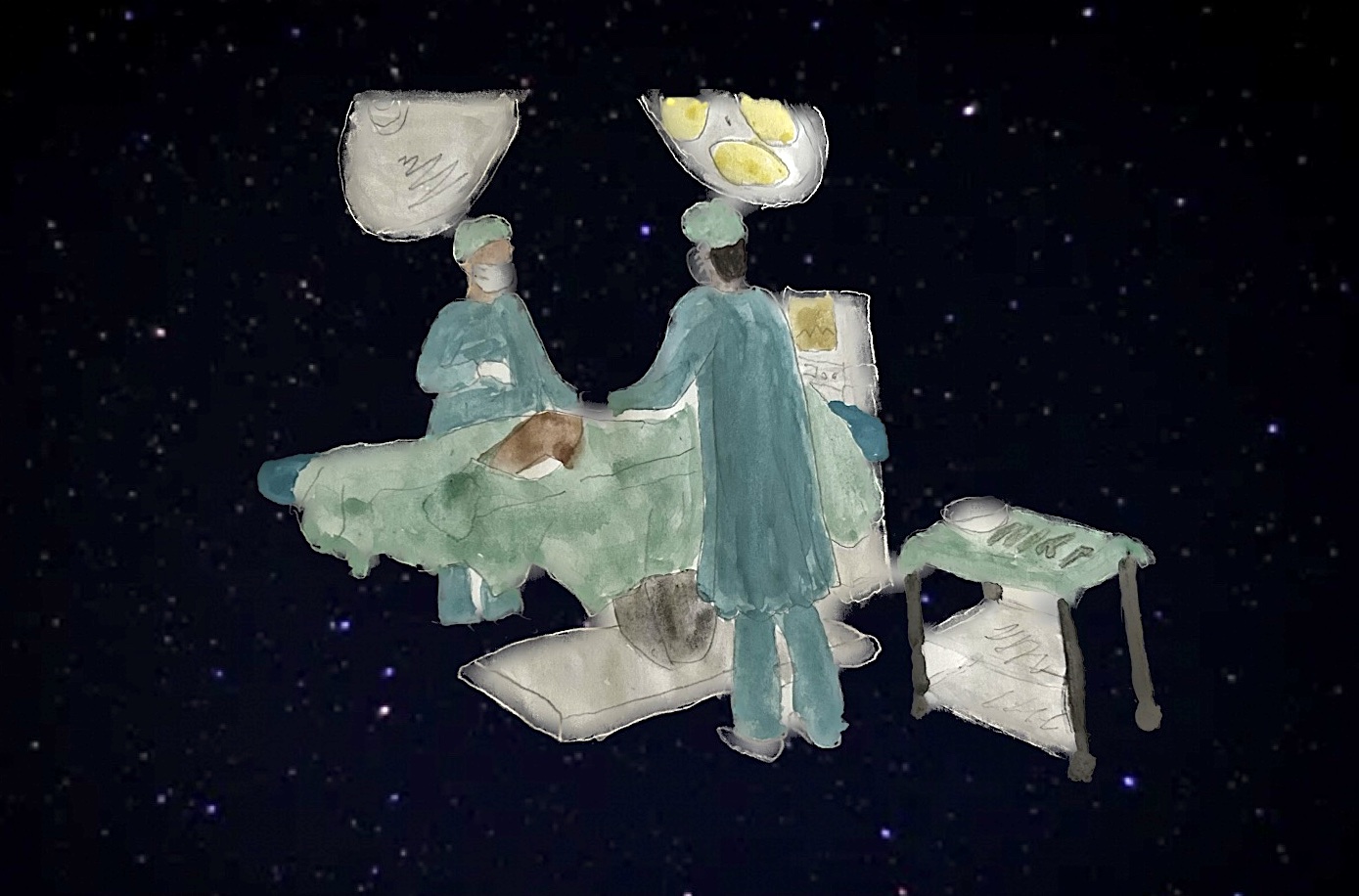A Sacred Space
The length of the operation, the fact that she was draped in a towel and the loss of tone in her limb, created the sensation that she was lifeless on the operating table. As a result, I attempted to portray this impression through a watercolour painting that only depicted a knee on the operation table, serving to obscure the patient’s identity as the painting has no face or body. I made the patient’s knee the focal point to highlight the type of surgery she was undergoing and to emphasise the patient’s vulnerability as her leg is exposed. I also removed the operating-theatre background and replaced it with a dark, almost night-time sky to highlight how she was alone and unaware of any mistakes that might have been made during the procedure. Perhaps this also reveals the level of confidence that the patient places in healthcare professionals and how much responsibility they hold for patients’ lives.
I used water colours to represent the patient’s lack of control because they are hard to control and define as the colours can mix unexpectedly. This mirrors the lack of agency the young person had during the surgery as she has put all her trust in the surgical team who are fully in control. I utilised light shades to demonstrate the physicians’ transparency and trustworthiness as mistakes may happen during the procedure that the patient is unaware of – symbolising the value of honesty and integrity as doctors.
This young woman was also from a Jehovah’s Witness denomination, which is something we learn/hear a lot about, but I’d never encountered in person. It was fascinating to watch how the physicians sought to recover every last drop of this patient’s blood to replace into her body because her faith does not accept blood of others. I’ve learnt through this experience that it takes a lot of considered collaboration to succeed – without the help of the nurses, anaesthetists, and other team members, it wouldn’t have been feasible.
Surgery is a learning process and decisions are made while the patient is under anaesthesia. This experience served most of all as a reminder of the level of trust that patients have in their doctors, something for me to always be mindful of in the future.
Comments
Add legacy comments here

This piece stood out to me because of the dark, night sky background and how it highlights that an operating room can feel like vacuum containing only the surgeons and patient. The illustration of the knee being the only part of the patient’s body that is visible shows how all the surgeons’ focus is on healing this one particular area of the patient. In contrast, it also portrays how the rest of the patient is completely covered and how concealing the face also hides the humanity of the patient on the table which makes you think about how much a trust a patient has to have in their healthcare team when they are unconscious on the operating table. Overall, the piece conveys how an operating room can feel like another world with doctors working as hard they can and the patient at its centre.
This art piece incapsulates some core aspects of Medicine.
Trust- it is only possible for a doctor to treat a patient when there is trust from the patient. Likewise, it is that trust that drives doctors to do their best so they can ensure the trust is not broken. This painting depicts that trust as the patient is lying on the table putting all their trust in the surgeons. It does so very well by using a dark background highlighting how the patient will not be aware of any mistakes being made.
Teamwork- the painting shows two surgeons working together reflecting on how teamwork is essential in healthcare and how it can ensure best quality of care is provided.
The painting shows only the knee of the patient, this could symbolise how doctors have to focus solely on the patients illness, not let that be affected by any another aspect about the patient, it can also show how doctors need to ensure they do not get emotionally attached and let that affect the way they provide cure to the patient. As mentioned in the abstract it also shows the vulnerability of the patient at that moment implying the sensitivity of the job as well.
The dark background used may also imply how the surgeon needs to focus and let the outside thoughts leave his mind, almost as if the only thing he can see is the operating table and the patient.